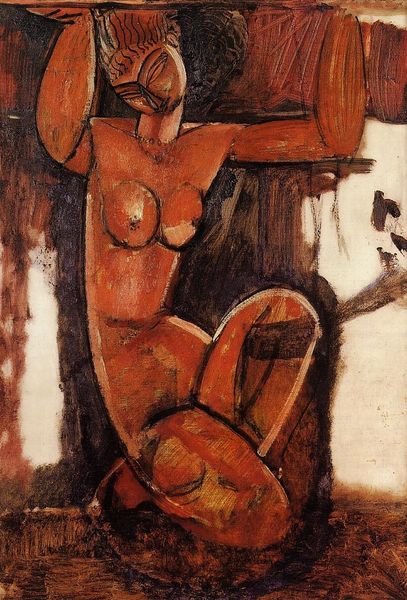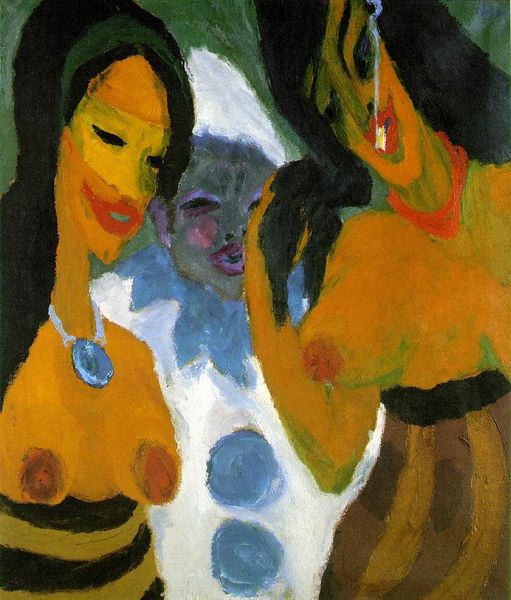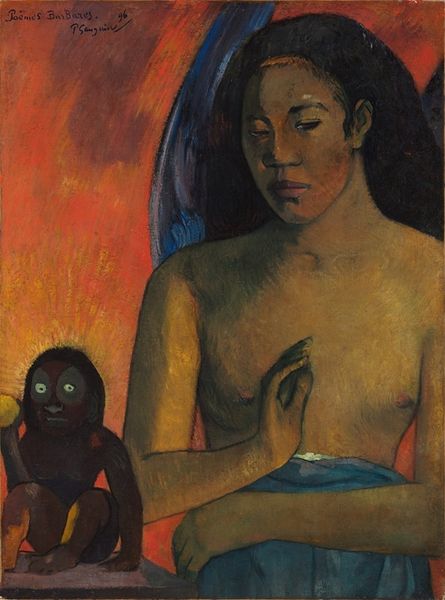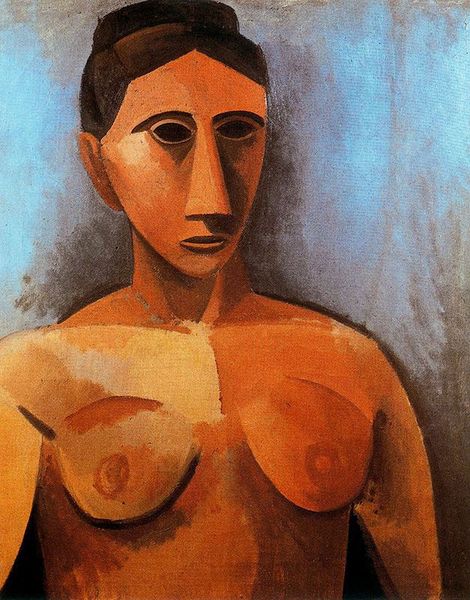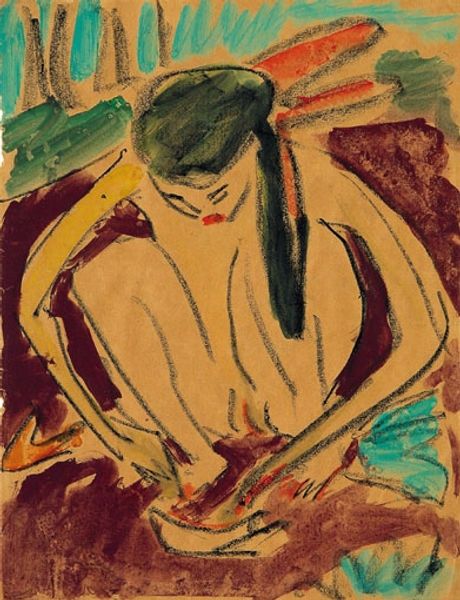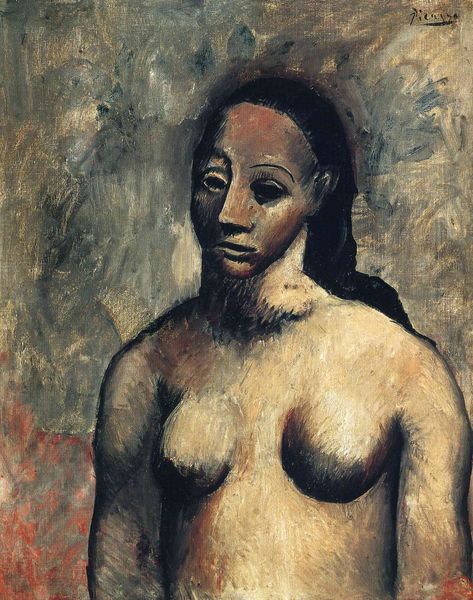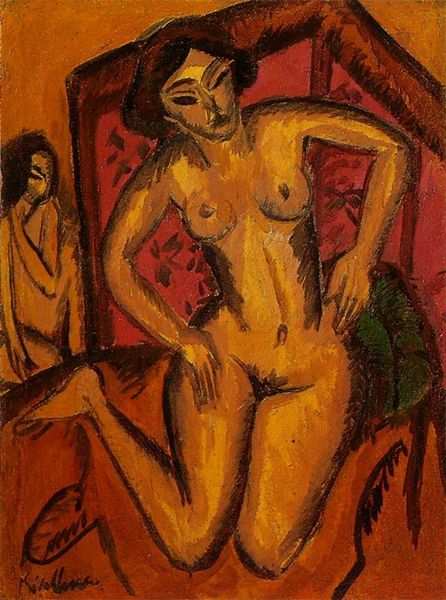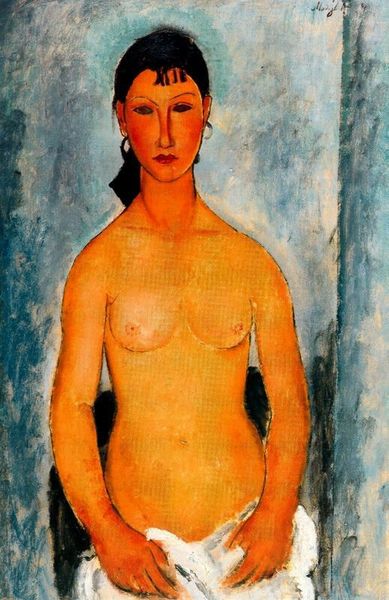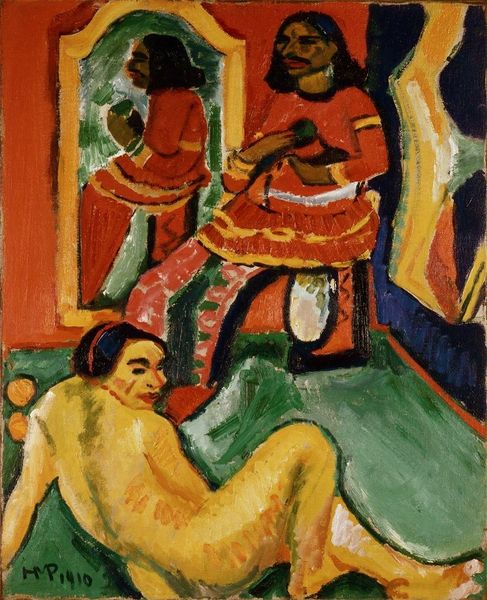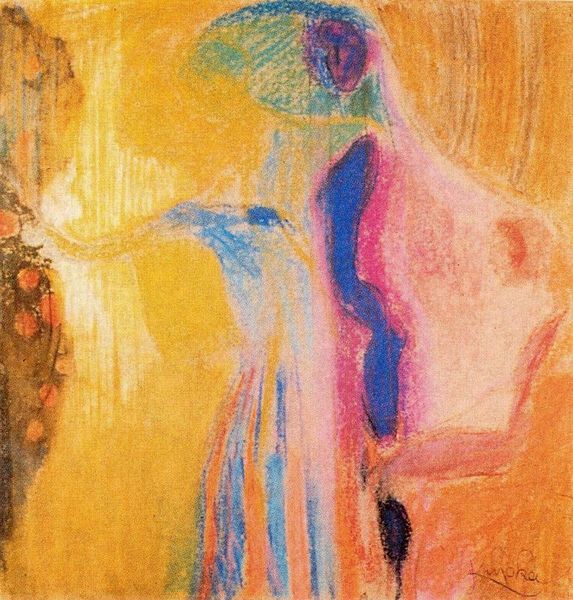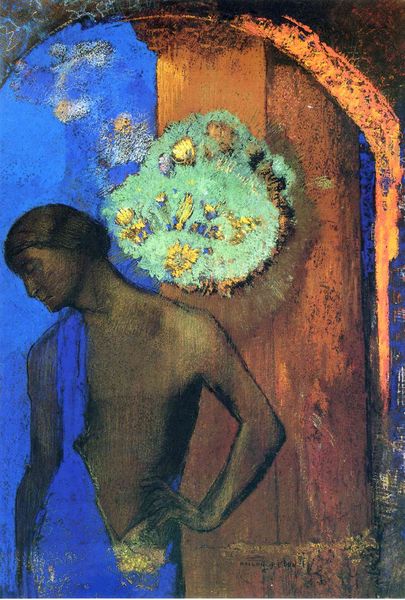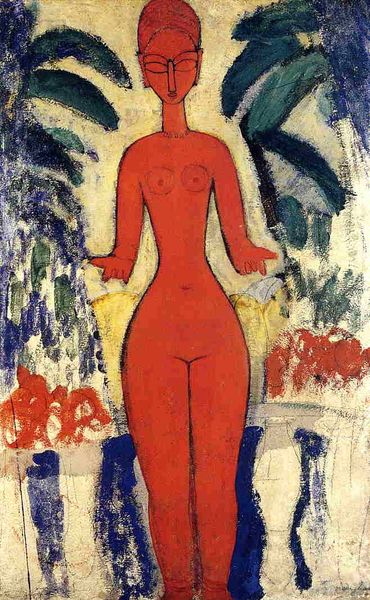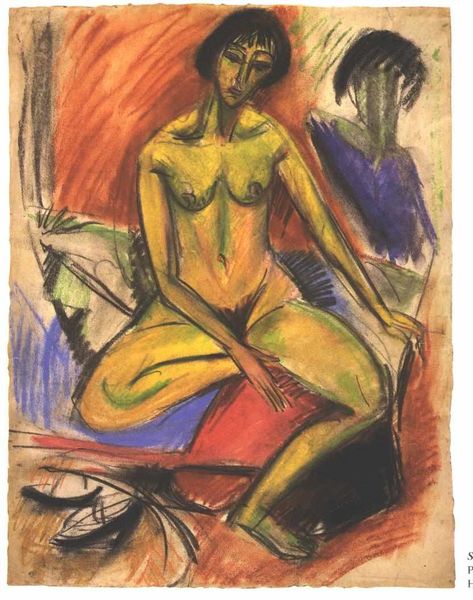
Dimensions: 54.9 x 49.5 cm
Copyright: Public domain
Paul Gauguin made this portrait of a Tahitian woman around 1890, using pastel on paper. Pastels are interesting, they're almost pure pigment, bound together with just enough binder to hold their form. This gives them a unique textural quality; see how the colors seem to sit on the surface, almost like a chalky dust? The image is built up through layers of these dry pigments. Gauguin’s strokes create a vibrant surface of color. The choice of pastel lends itself to the immediacy and intimacy of this work. Consider, too, the way the medium relates to the colonial context of the image. Gauguin, like many other artists, found inspiration in what he considered to be simpler, more “authentic” cultures, far removed from the industrialized West. Yet the materials he used – pastels, paper – were themselves products of that world, and easily transportable. Ultimately, the complex history of this artwork reminds us that no act of creation happens in isolation. Every stroke, every color, carries with it a trace of the world it comes from.
Comments
No comments
Be the first to comment and join the conversation on the ultimate creative platform.
